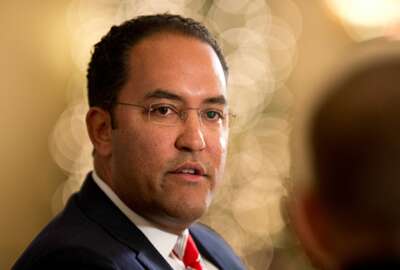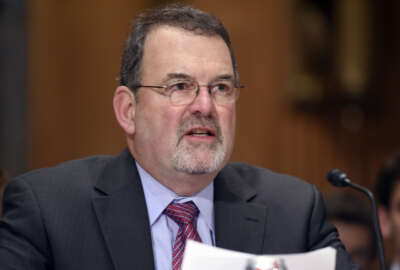

The General Services Administration’s Assisted Acquisition Service finds itself moving away from IT and into professional services.
As IT modernization goes mainstream and everyone moves to the cloud, federal agencies are building the kind of acquisition expertise they need to make IT contracting routine. That’s why the General Services Administration’s Assisted Acquisition Service finds itself moving away from IT and into professional services.
AAS helps agencies acquire goods and services that require specializations outside of standard government contracting.
“The best way to say it is there are a lot of existing contract vehicles and a lot of technical solutions that are easy to obtain within the IT market. If you’re looking to buy cloud contractors, cloud hosting, there’s a way to buy that,” said Chris Hamm, director of GSA’s FEDSIM, after a Coalition for Government Procurement panel on April 4. “In terms of where our customers seem to be needing more help is within the professional services. There are not as many large contracts that are out there that you can go to as a normal buyer and see how much something costs and how you can deliver it other than working at hourly rates, what people cost.”
In August 2016, Bloomberg Government predicted nine out of the top 20 contract opportunities in 2017 will be professional services, with a total potential value of $142 billion.
At the top of that list of opportunities was the OASIS contract, an integrated services contract valued at $60 billion.
“A lot of the support you’re going to get out of AAS is based on unmet requirements contractually, not based on innovation,” Hamm said. “This stuff is out there in industry. It’s the ability to get it under contract at a fair and reasonable price within the constraints that when the money arrives, the acquisition capability is ready.”
One example Hamm gave is commercially owned and operated drones. That’s something that can easily be found on commercial websites, but there aren’t many existing government contracts.
Professional services are also more valuable due to their level of specialization — the more complex services like professional engineering, logistics and business consulting are more expensive. Professional services is also a bigger part of the budget at $66 billion versus IT services at $52 billion.
That’s significant, considering AAS operates on a fee-for-service basis. That fee is calculated as a sliding scale percentage of the project value. The average, according to Tom Howder, assistant commissioner of AAS, is around 3.2 percent.
And that adds up, considering the business AAS is doing.
“In terms of the overall flowthrough of AAS, and then specifically what the pipeline looks like organizationally, FEDSIM is looking at doing probably $2.6 or $2.7 billion in contractor flowthrough this year, and likely to be over $3 billion next year based on the current work set that we have,” Hamm said. “If you include the full AAS portfolio, the numbers are similarly increasing, about 20 percent year-over-year, so you’re going to see $4 billion, $5 billion, $6 billion as a regular march toward the government needing to do more work with less resourcing means that more of that work is going to go to each of the regional [Client Service Centers] and to FEDSIM overall, assuming that we can continue to get these acquisitions done in in a short duration of time.”
But the money isn’t the point, Hamm said.
“The organizations that are creating contracts for the entire government to use generally will charge a fee, but the benefits to the government on the entire buying scale overcomes any sort of consideration of whether or not we’re charging a fee for whatever thing that you’re buying, because we’re providing an overall value for the rest of the system,” he said.
Copyright © 2025 Federal News Network. All rights reserved. This website is not intended for users located within the European Economic Area.
Daisy Thornton is Federal News Network’s digital managing editor. In addition to her editing responsibilities, she covers federal management, workforce and technology issues. She is also the commentary editor; email her your letters to the editor and pitches for contributed bylines.
Follow @dthorntonWFED


